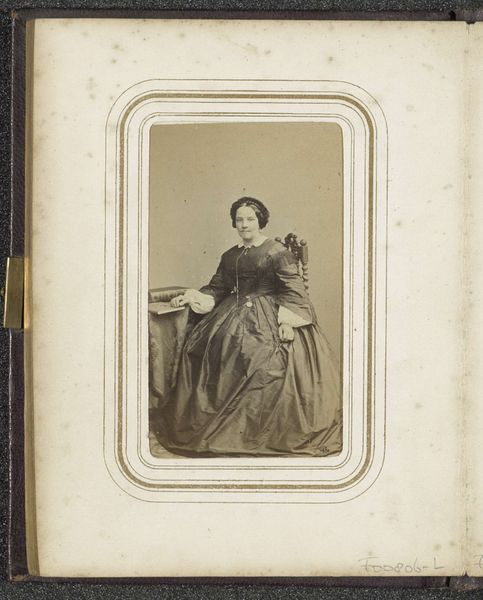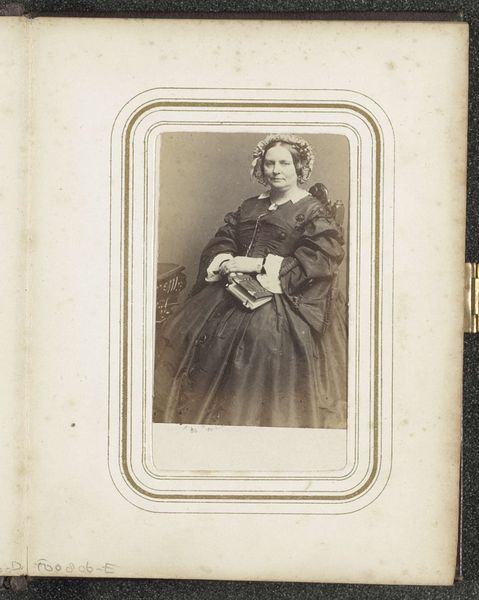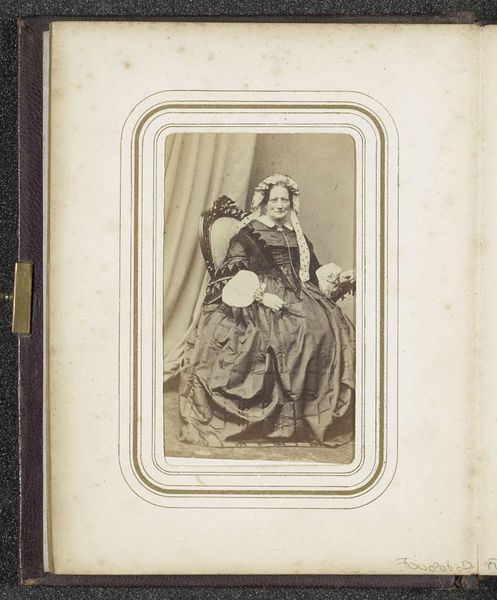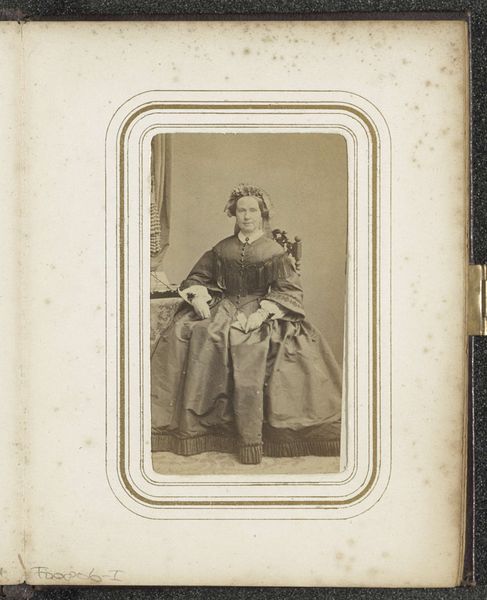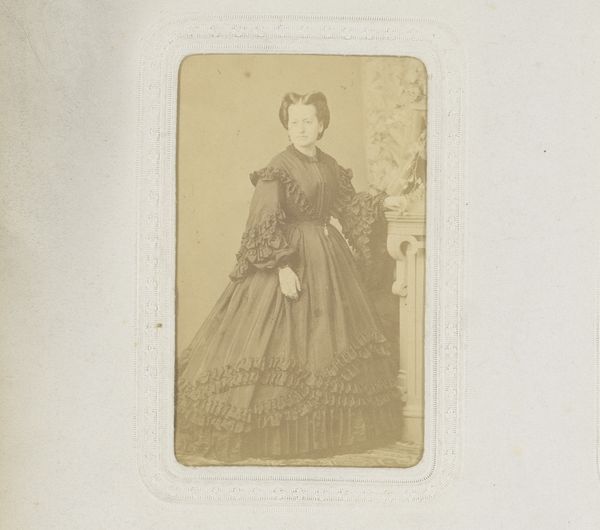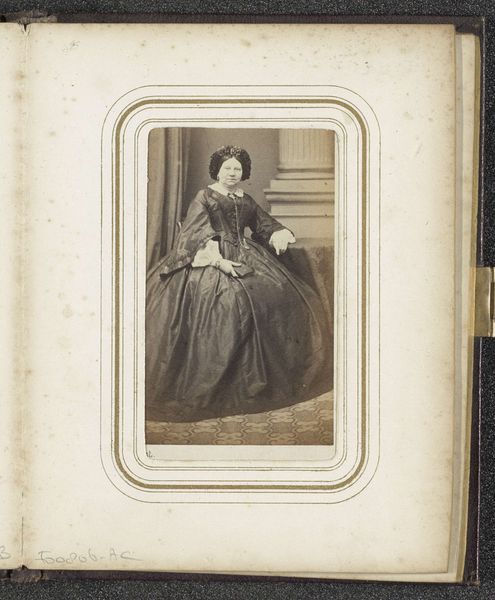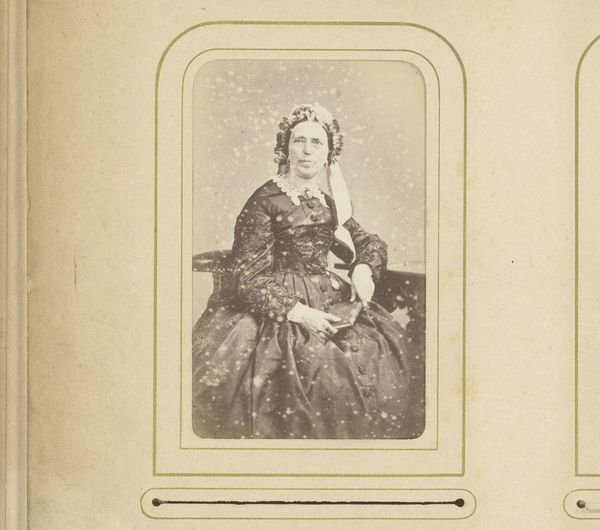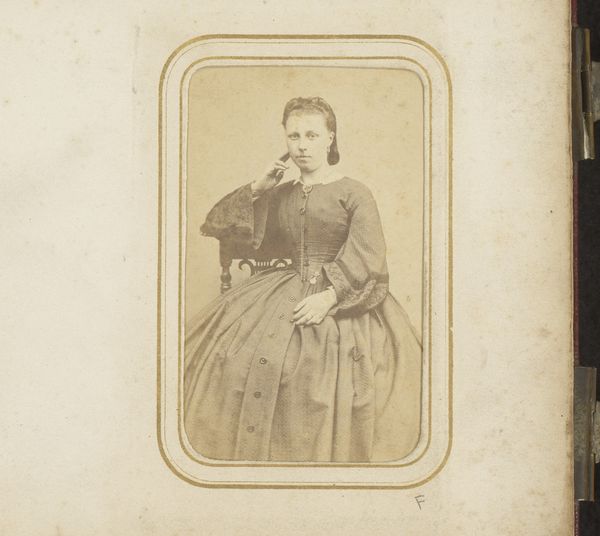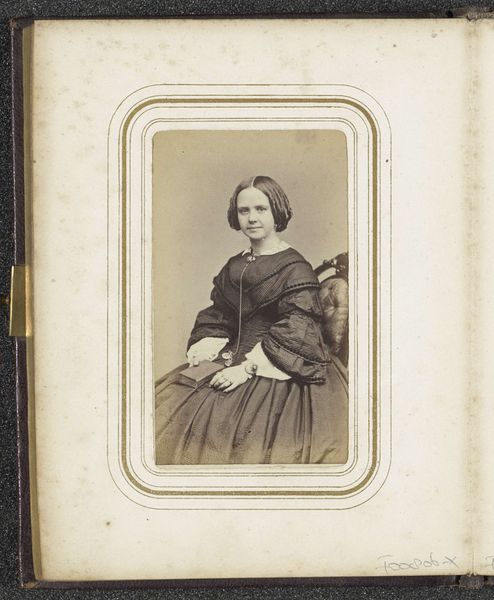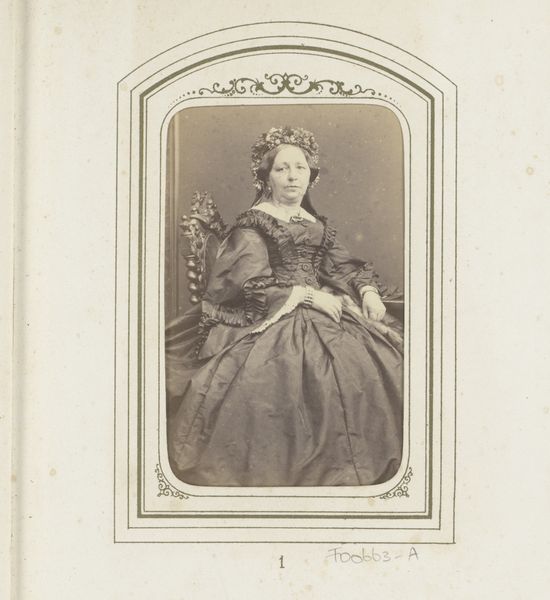
Portret van een zittende vrouw in een gestreepte jurk met een bloemenmuts 1861 - 1874
0:00
0:00
albertgreiner
Rijksmuseum
photography, gelatin-silver-print
#
portrait
#
photography
#
coloured pencil
#
gelatin-silver-print
#
watercolor
Dimensions: height 89 mm, width 57 mm, height 105 mm, width 60 mm
Copyright: Rijks Museum: Open Domain
Curator: Alright, let’s take a look at "Portret van een zittende vrouw in een gestreepte jurk met een bloemenmuts," or, “Portrait of a Seated Woman in a Striped Dress with a Flower Bonnet.” It's a gelatin silver print created sometime between 1861 and 1874, and we have it here at the Rijksmuseum. What strikes you first? Editor: It’s the stillness, I think. The composition is perfectly balanced. There's such composure, even in the faint blurring of the photographic process itself. There’s a solemn, quiet energy, isn’t there? Curator: Absolutely. Greiner really captured a moment of quiet reflection. What’s interesting here, looking at it formally, is the way the horizontal stripes of the dress both anchor the figure and contribute to the feeling of constrained movement. There is a kind of grid formed between the dress stripes, the dark vertical lines of the chair, and the edges of the mounted photograph. The floral bonnet atop her head introduces an ornamental quality but offers slight chromatic contrast to the figure’s cool monochrome presentation. It draws the eye, like an afterthought. Editor: I wonder what she was thinking. I get the sense that she would've lived during such a transformative, industrial shift, yet we still see such antiquated sensibilities through her adornments. She embodies a moment of transition between worlds. It’s quite moving, if you ask me. It almost reads like a watercolor. Is it a watercolor photograph? Curator: Technically, it's a gelatin-silver print, and in addition to photography as a medium, AI tagging points to applications of coloured pencil and watercolor! The texture of the image lends itself to that comparison, doesn't it? These details really help situate this artwork—the intersection of portraiture and early photographic techniques. The photograph also functions as a kind of historical document; this woman’s class, her sense of style, even her mood are palpable after all this time. It is, after all, through formalism that such elements coalesce, producing such strong affective currents for me as a viewer. Editor: A visual artifact filled with lingering energies. Yes, formalism really helps the modern eye access her story. Curator: Indeed. It leaves you with this potent, thoughtful pause, which feels incredibly special.
Comments
No comments
Be the first to comment and join the conversation on the ultimate creative platform.

